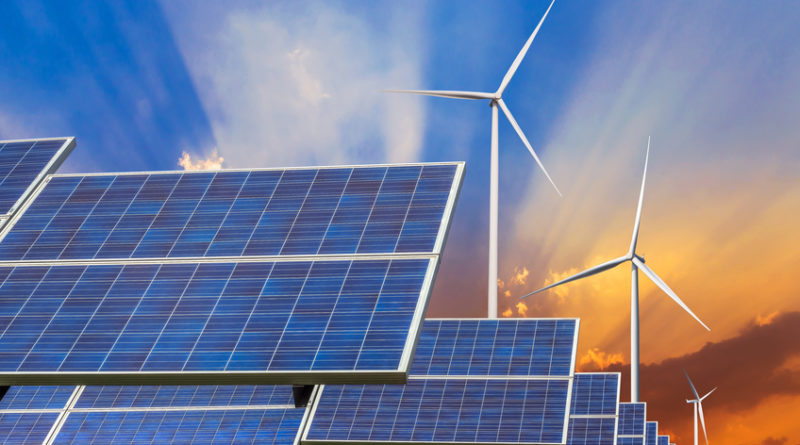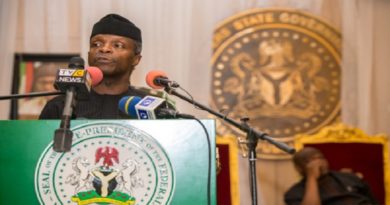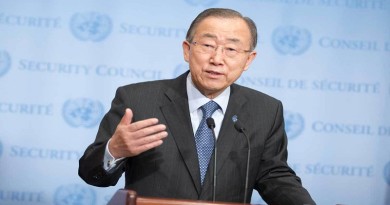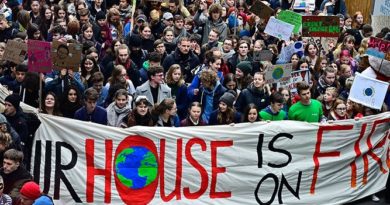Renewable energy increases by 161GW in 2016- REN21
Despite 23 per cent less investment, the global renewable sector in 2016 recorded additional 161 GW power capacity added according to a new report released on Wednesday June 7, 2017 by the Renewable Energy Policy Network for the 21st Century (REN21).
The report tagged ‘Renewables 2017 Global Status Report (GSR), the most comprehensive annual overview of the state of renewable energy shows an increase of 9% from the previous year.
Additions in installed renewable power capacity set new records in 2016, with 161 gigawatts (GW) installed, increasing total global capacity by almost 9% over 2015, to nearly 2,017 GW. Solar Photovoltaic (PV) accounted for around 47% of the capacity added, followed by wind power at 34% and hydropower at 15.5%.
Renewables are becoming the least cost option. Recent deals in Denmark, Egypt, India, Mexico, Peru and the United Arab Emirates saw renewable electricity being delivered at USD 0.05 per kilowatt-hour or less. This is well below equivalent costs for fossil fuel and nuclear generating capacity in each of these countries. Winners of two recent auctions for offshore wind in Germany have done so relying only on the wholesale price of power without the need for government support, demonstrating that renewables can be the least cost option.
The report noted that the inherent need for “baseload” is a myth. Integrating large shares of variable renewable generation can be done without fossil fuel and nuclear “baseload” with sufficient flexibility in the power system – through grid interconnections, sector coupling and enabling technologies such as ICT, storage systems electric vehicles and heat pumps. This sort of flexibility not only balances variable generation, it also optimizes the system and reduces generation costs overall. It comes as no surprise, therefore that the number of countries successfully managing peaks approaching or exceeding 100% electricity generation from renewable sources are on the rise. In 2016, Denmark and Germany, for example, successfully managed peaks of renewables electricity of 140% and 86.3%, respectively.
Global energy-related CO2 emissions from fossil fuels and industry remained stable for a third year in a row despite a 3% growth in the global economy and an increased demand for energy. This can be attributed primarily to the decline of coal, but also to the growth in renewable energy capacity and to improvements in energy efficiency.
Other positive trends include:
Innovations and breakthroughs in storage technology will increasingly provide additional flexibility to the power system. In 2016, approximately 0.8 GW of new advanced energy storage capacity became operational, bringing the year-end total to an estimated 6.4 GW.
Markets for mini-grids and stand-alone systems are evolving rapidly and Pay-As-You-Go (PAYG) business models, supported by mobile technology, are exploding. In 2012, investments in PAYG solar companies amounted to only USD 3 million; by 2016 that figure had risen to USD 223 million (up from USD 158 million in 2015).
Arthouros Zervos, Chair of REN21, said, “The world is adding more renewable power capacity each year than it adds in new capacity from all fossil fuels combined. One of the most important findings of this year’s GSR, is that holistic, systemic approaches are key and should become the rule rather than the exception. As the share of renewables grows we will need investment in infrastructure as well as a comprehensive set of tools: integrated and interconnected transmission and distribution networks, measures to balance supply and demand, sector coupling (for example the integration of power and transport networks); and deployment of a wide range of enabling technologies.”
But the energy transition is not happening fast enough to achieve the goals of the Paris Agreement.
Investments are down. Although global investment in new renewable power and fuel capacity was roughly double that in fossil fuels, investments in new renewable energy installations were down 23% compared to 2015. Among developing and emerging market countries, renewable energy investment fell 30%, to USD 116.6 billion, while that of developed countries fell 14% to USD 125 billion. Investment continues to be heavily focused on wind and solar PV, however all renewable energy technologies need to be deployed in order to keep global warming well below 2C.
Transport, heating and cooling sectors continue to lag behind the power sector. The deployment of renewable technologies in the heating and cooling sector remains a challenge in light of the unique and distributed nature of this market. Renewables-based decarbonisation of the transport sector is not yet being seriously considered, or seen as a priority. Despite a significant expansion in the sales of electric vehicles, primarily due to the declining cost of battery technology, much more needs to be done to ensure sufficient infrastructure is in place and that they are powered by renewable electricity. While the shipping and aviation sectors present the greatest challenges, government policies or commercial disruption have not sufficiently stimulated the development of solutions.
Fossil fuel subsidies continue to impede progress. Globally, subsidies for fossil fuels and nuclear power continue to dramatically exceed those for renewable technologies. By the end of 2016 more than 50 countries had committed to phasing out fossil fuel subsidies, and some reforms have occurred, but not enough. In 2014 the ratio of fossil fuel subsidies to renewable energy subsidies was 4:1. For every USD 1 spent on renewables, governments spent USD 4 perpetuating our dependence on fossil fuels.
Christine Lins, Executive Secretary of REN21, explains: “The world is in a race against time. The single most important thing we could do to reduce CO2 emissions quickly and cost-effectively, is phase-out coal and speed up investments in energy efficiency and renewables. When China announced in January that it was cancelling more than 100 coal plants currently in development, they set an example for governments everywhere: change happens quickly when governments act –by establishing clear, long-term policy and financial signals and incentives.”




